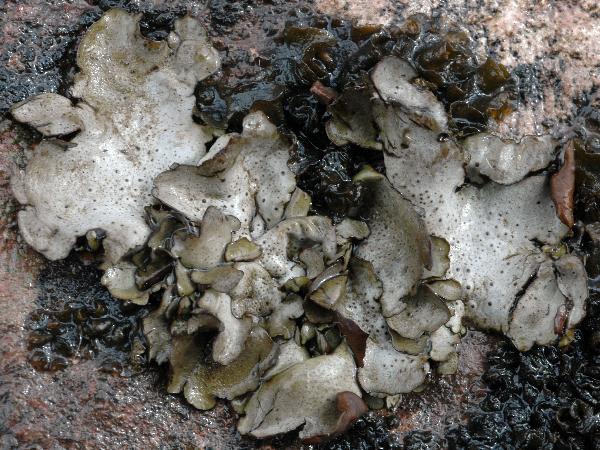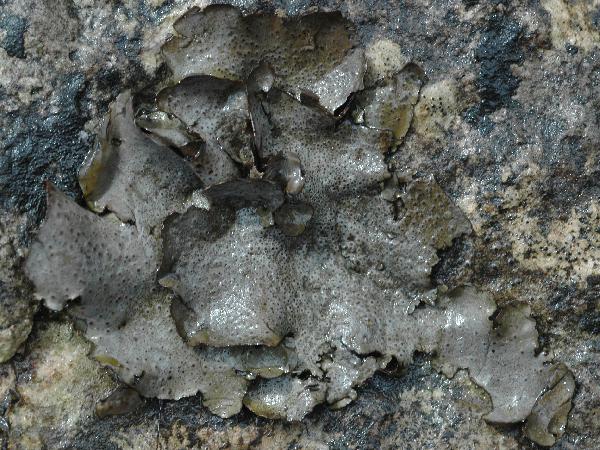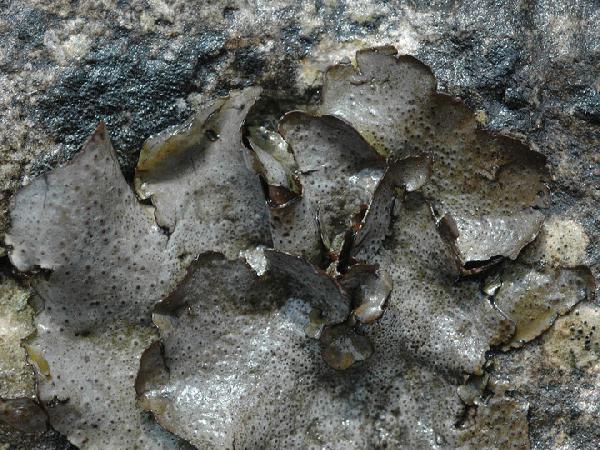Dermatocarpon leptophyllum (Ach.) K.G.W. Lång
Acta Soc. Fauna Fl. Fenn., 34, 3: 42, 1912. Basionym: Lichen leptophyllus Ach. - Lichenogr. Suec. Prodr.: 141, 1799.
Synonyms:
Distribution: N - Ven, TAA, Lomb. C - Tosc. S - Camp.
Description: Thallus foliose-umbilicate, monophyllous or of a few connected lobes, rather thin (0.2-0.5 mm thick when dry), attached by one or rarely a few central holdfasts. Lobes usually concave (5-)7-18(-25) mm wide. Upper surface grey to almost black in parts, epruinose or only partially pruinose; lower surface smooth to partly verrucose. Upper cortex (40-)50- 90(-110) μm thick, brown in the uppermost part, with an epinecral layer of air-filled hyphae; medulla consisting of c. 3 μm thick hyphae; lower cortex (30-)40-60(-70) μm thick, the outermost part brown, consisting of 5-8 cell layers; crystals visible in polarized light and soluble in K present in the lower cortex. Perithecia dark brown to black, immersed, with a slightly protruding ostiole, more or less spherical, without involucrellum, the wall colourless except in the brown uppermost part. Hamathecium or periphyses and periphysoids, interascal filaments absent; hymenial gel hemiamyloid. Asci 8-spored, clavate, I-, fissitunicate, the wall thickened above, with an ocular chamber, dehiscent by extrusion of an endotunica to form a delicate rostrum, Verrucaria-type, with more or less uniseriately arranged ascospores. Ascospores 1-celled, hyaline, narrowly ellipsoid, 7-10.5(-11.5) x 4.5-6(-6.5) µm. Pycnidia very rare, black. Conidia 5-6 x c. 1 μm. Photobiont chlorococcoid. Spot tests: cortex and and medulla K-, C-, KC-, P-, UV-. Chemistry: without lichen substances.Note: a species of the D. miniatum group with umbilicate thalli usually provided with blackish grey concave lobes, and narrowly ellipsoid (Thüs, in litt., while most descriptions state that they are broadly ellipsoid to subglobose), uniseriate ascospores in cylindrical asci, found on horizontal or depressed rock faces of limestone in seasonally wet places. Most of the Italian records are old and require re-confirmation (see Nimis 1993: 274).
Growth form: Foliose, umbilicate
Substrata: rocks
Photobiont: green algae other than Trentepohlia
Reproductive strategy: mainly sexual
On otherwise dry surfaces with short periods of water seepage after rain
Commonnes-rarity: (info)
Alpine belt: very rare
Subalpine belt: very rare
Oromediterranean belt: absent
Montane belt: very rare
Submediterranean belt: absent
Padanian area: absent
Humid submediterranean belt: absent
Humid mediterranean belt: absent
Dry mediterranean belt: absent

Predictive model

Leif Stridvall (Courtesy Anita Stridvall) - Source: http://www.stridvall.se/lichens/gallery/Dermatocarpon

Leif Stridvall (Courtesy Anita Stridvall) - Source: http://www.stridvall.se/lichens/gallery/Dermatocarpon
Growth form: Foliose, umbilicate
Substrata: rocks
Photobiont: green algae other than Trentepohlia
Reproductive strategy: mainly sexual
On otherwise dry surfaces with short periods of water seepage after rain
Commonnes-rarity: (info)
Alpine belt: very rare
Subalpine belt: very rare
Oromediterranean belt: absent
Montane belt: very rare
Submediterranean belt: absent
Padanian area: absent
Humid submediterranean belt: absent
Humid mediterranean belt: absent
Dry mediterranean belt: absent

Predictive model

Leif Stridvall (Courtesy Anita Stridvall) - Source: http://www.stridvall.se/lichens/gallery/Dermatocarpon

 DOLICHENS
DOLICHENS



